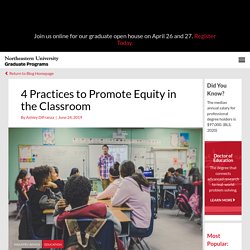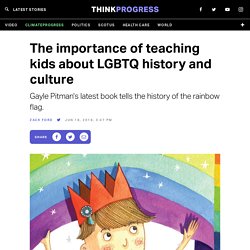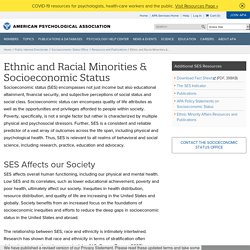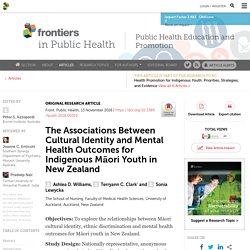

Nancy Murphy
8 Powerful Ways to Promote Equity in the Classroom. Every student in my classroom deserves an equal chance.

Agree or disagree? Responding to the level of diversity in your classroom is more important than ever. But all too often, our education system reinforces the same inequalities it was designed to overcome. Actively promoting equity in the classroom helps remove barriers so all of your students can succeed. And when every student has the resources they need, the entire classroom thrives! 4 Practices to Promote Equity in the Classroom. The United States is comprised of over 300 million individuals with unique cultures, identities, and backgrounds, and the population is only becoming more diverse over time.

A recent Pew Research Center analysis of U.S. Census Bureau data, for example, determined that the “post-Millennial generation”—those born from 1997 to 2012—is “the most racially and ethnically diverse generation” in the country’s history. As this and other types of diversity have continued to increase in society today, the need for equity among people of different backgrounds has become equally relevant. Conversations about issues such as LGBTQ discrimination or the “Black Lives Matter” movement, among many others, are making their way into workplaces, schools, and communities more often than ever before. In educational institutions especially, there is a desire among students, teachers, and administration alike to embrace this diversity and create equity in the classroom. Culturally Responsive Classroom Management Strategies. Lgbt Books.
LGBT is an initialism that stands for lesbian, gay, bisexual, and transgender.

In use since the 1990s, the term is an adaptation of the initialism LGB, which was used to replace the term gay in reference to the LGBT community beginning in the mid-to-late 1980s. The initialism LGBT is intended to emphasize a diversity of sexuality and gender identity-based cultures. It may be used to refer to anyone who is non-heterosexual or non-cisgender, instead of exclusively to people who are lesbian, gay, bisexual, or transgender.
To recognize this inclusion, a popular variant adds the letter Q for those w LGBT is an initialism that stands for lesbian, gay, bisexual, and transgender. The importance of teaching kids about LGBTQ history and culture. Over the past decade, there’s been a plethora of books aimed at children on LGBTQ themes.

Some of these books tell familiar romantic fairy tales with same-sex protagonists, while others provide basic education about kids who might be transgender. Author Gayle Pitman, however, is trying to create space for books that actually teach kids about LGBTQ history and culture. Is your identity given or created? How social media is affecting teens. What is Literacy KPerry. Sociocultural & Critical Approaches to Literacy. The revolutionary truth about kids and gender identity.
Hear Kids' Honest Opinions on Being a Boy or Girl Around the World. Bringing Cultural Context and Self-Identity into Education: Brian Lozenski at TEDxUMN. Culturally Responsive Practices in Literacy. Equality Is Not Enough: What the Classroom Has Taught Me About Justice. Imagine this situation: A classroom of students is settling down to work on a writing task.

All of a sudden, one student exclaims, “That’s not fair! Why do they get to listen to the instructions on the headphones! I want to listen, too!” This happens way more often than you think. Not because teachers are inherently unfair creatures (I would know; I’m a teacher), but because students have come to understand “fairness” as simply equal treatment. 7.3 Adolescence: Developing Independence and Identity – Introduction to Psychology – 1st Canadian Edition. Learning Objectives Summarize the physical and cognitive changes that occur for boys and girls during adolescence.Explain how adolescents develop a sense of morality and of self-identity.

The Role of School in Adolescents’ Identity Development. A Literature Review. Characteristics of the Literature The 111 articles were found across a wide variety of scientific journals (n = 80).

In total, 19 of the 111 articles were theoretical in nature. Among the empirical research papers, six articles were quantitative in nature and another set of seven articles employed a mixed-methods design. Seventy-eight articles exclusively used qualitative research methods and generally presented small case studies. Of these qualitative studies, 60 reported longitudinal research. Theoretical Perspectives on Identity Development Different theoretical perspectives on identity development can be found in the studies included in our literature review.
Sociocultural Perspectives. Ethnic and Racial Minorities & Socioeconomic Status. Socioeconomic status (SES) encompasses not just income but also educational attainment, financial security, and subjective perceptions of social status and social class.

Socioeconomic status can encompass quality of life attributes as well as the opportunities and privileges afforded to people within society. Poverty, specifically, is not a single factor but rather is characterized by multiple physical and psychosocial stressors. Further, SES is a consistent and reliable predictor of a vast array of outcomes across the life span, including physical and psychological health. The Associations Between Cultural Identity and Mental Health Outcomes for Indigenous Māori Youth in New Zealand. Introduction Rangatahi Māori, the indigenous youth of New Zealand experience significantly poorer mental health outcomes compared to Pākehā/NZ European youth (1–7).

Rates of serious depressive symptoms are similar (Māori 13.9%, NZ European 12.1%), but Māori youth report considerably higher prevalence of suicide attempts (Māori 6.5%, NZ European 2.7%) and poorer general wellbeing (Māori 10.5%, NZ European 6.8%) compared to their peers (1).